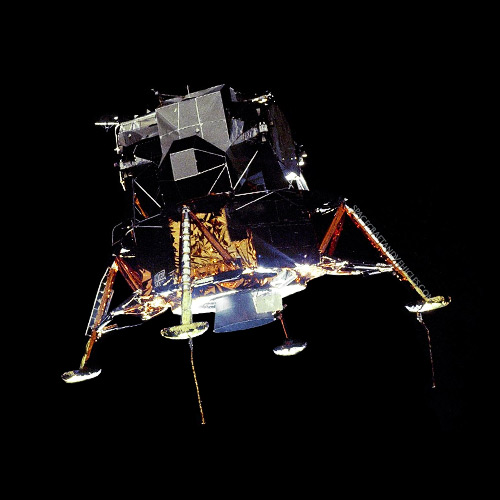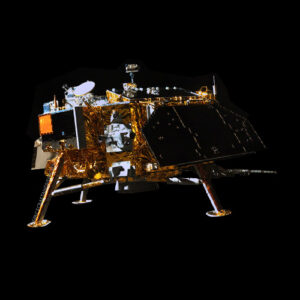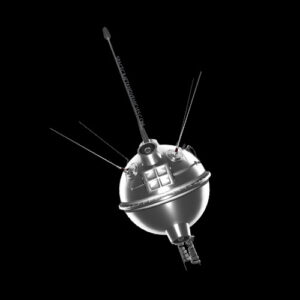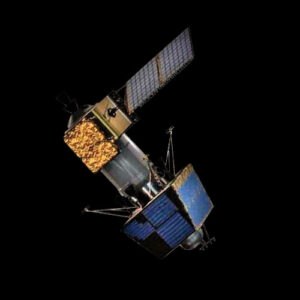The Apollo Lunar Module (LM) stands as a symbol of human ingenuity, enabling the historic Apollo missions to land astronauts on the Moon. Its significance lies in being the spacecraft responsible for ferrying astronauts from lunar orbit to the lunar surface and back.
A significant milestone in human space exploration occurred when Apollo 11’s Lunar Module, nicknamed Eagle, successfully touched down on the Moon on July 20, 1969. This marked the first time humans had landed on another celestial body.
Design and Construction
The Lunar Module was a two-stage spacecraft comprising the descent and ascent stages. Constructed primarily of aluminum alloy, it featured a modular design to facilitate lunar surface exploration. Unique engineering challenges included developing a lightweight yet sturdy structure capable of withstanding the Moon’s surface conditions.
Mission Objectives of the Lunar Module
The primary objective of the Lunar Module was to safely transport astronauts to and from the lunar surface during Apollo missions. Secondary goals included:
Provide a base for extended lunar surface exploration: The Lunar Module was designed to serve as a shelter and operational base for astronauts during their moonwalks (EVAs), allowing them to stay on the Moon’s surface for several days in later missions.
Support life and communication: The Lunar Module provided life support systems for astronauts, including oxygen, temperature regulation, and pressurisation, while also enabling communication between astronauts on the Moon and mission control on Earth.
Test the performance of spacecraft systems in a lunar environment: The Lunar Module’s systems, including propulsion, guidance, and navigation, were tested in real lunar conditions, which were critical for the success of both landing and returning to lunar orbit.
Enable rendezvous and docking with the Command Module: After lunar surface exploration, the Lunar Module’s ascent stage had to successfully launch from the Moon and rendezvous with the Command Module in lunar orbit, a crucial step to bring the astronauts back to Earth.
Demonstrate precision landing capabilities: As missions advanced, the Lunar Module was tasked with landing in more complex and scientifically interesting locations, requiring increased precision and control.
Launch and Deployment
The Lunar Module launched atop the Saturn V rocket from Kennedy Space Center. The Saturn V was the most powerful rocket ever built, specifically designed to propel astronauts to the Moon. Once the spacecraft entered lunar orbit, the Lunar Module, which had been stowed in the upper section of the rocket, was deployed.
The LM consisted of two stages: the descent stage, which carried the astronauts to the lunar surface, and the ascent stage, which would later bring them back to the Command Module in orbit.
Upon deployment, the Lunar Module separated from the Command and Service Modules and began its descent toward the Moon’s surface, using a descent engine that allowed for precise control of its speed and trajectory. This critical phase of the mission required careful piloting and real-time adjustments as astronauts guided the LM to a safe landing site. During the descent, the crew navigated various hazards, such as craters, boulders, and uneven terrain.
Technical Specifications
- Dimensions: Varies based on mission, typically around 9.4 meters tall and 4.2 meters wide.
- Weight: Approximately 15,000 kilograms.
- Propulsion: Descent engine for landing, ascent engine for liftoff from the Moon.
- Power Source: Batteries.
- Instruments and Equipment: Landing gear, scientific instruments for surface exploration.
Ascent Stage of Apollo 17 Lunar Module
The ascent stage of Apollo 17, lasting 30 seconds, included the crew cabin with instrument panels, flight controls, and a forward hatch for lunar surface access. It had its own Ascent Propulsion System (APS) engine and two hypergolic propellant tanks for returning to lunar orbit and rendezvousing with the Command Module. A Reaction Control System (RCS) with sixteen thrusters controlled attitude and translation.
Inside, it featured life support, VHF and S-band communication systems, and guidance via primary (PGNCS) and backup (AGS) systems. A rendezvous radar and optical telescope aided navigation. The ascent stage supported lunar stays of up to 75 hours, with hammocks for crew rest and storage for up to 238 pounds of lunar samples and photographic film on Apollo 17.
Descent Stage of Apollo 17 Lunar Module
The descent stage’s primary function was to enable a powered landing and support surface activities, later serving as the launch pad for the ascent stage. It had an octagonal shape with four folding landing legs and a throttleable Descent Propulsion System (DPS) engine powered by four hypergolic propellant tanks. A Doppler radar antenna provided altitude and descent rate data. Most of the surface was covered in thermal insulation foil, except for key components like the engine, ladder, and heat shield. The front leg had a ladder for astronauts to move between the cabin and lunar surface, with sensor probes on the landing pads for engine cutoff.
Lunar exploration tools were stored in the Modular Equipment Stowage Assembly (MESA), which also contained a TV camera and U.S. flag. Scientific experiments were housed in the rear compartment, and later missions included an external S-band antenna. Apollo 15 and onwards carried a Lunar Roving Vehicle for extended exploration, while extra life support equipment was stored in external compartments for longer missions.











